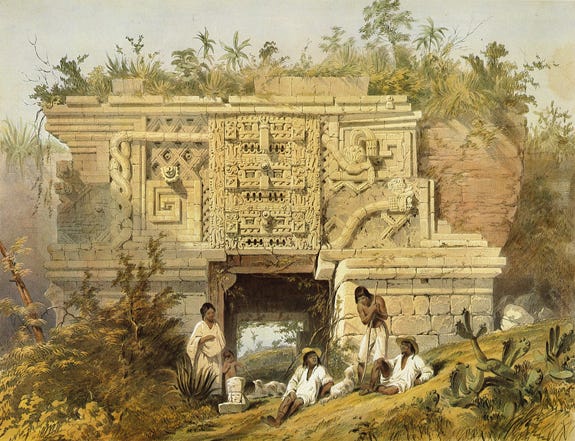My Top Resources for Teaching... the Maya
Nine resource to support teaching aspects of the mysterious and intriguing Maya
In the National Curriculum, the Maya is one of the options for studying a non-European society that contrasts with Britain: the three choices are early Islamic civilisation, Benin or the Maya. This latest blog focuses on some resources that would help when teaching the Maya (probably the most commonly taught of the three).
1. BBC Bitesize Guides
https://www.bbc.co.uk/bitesize/topics/zq6svcw
You know where you with BBC Bitesize; good, reliable information presented in an accessible way for children. I really like these guides as there are images of sources and sites, solid written information as well as animations and quizzes to test pupils’ knowledge. There are 20 guides altogether on all the key aspects of the Maya.
2. British Museum Maya Research Project
https://www.britishmuseum.org/projects/preserving-maya-heritage
This is an amazing project by the British Museum, in conjunction with Google Cultures. It comprises of images of sites and artefacts plus plenty of reliable information. What I really like about it is that you can explore different aspects of Mayan life in a really interactive way, using images from Google Earth to investigate the sites. The photos of primary sources would be really useful for enquiry, source based lessons and it poses questions such as ‘Were the Maya peaceful?’
3. Maya Archaeologist
https://www.mayaarchaeologist.co.uk
This is the site of an archaeologist, Dr Diane Davies, who has information on a range of aspects of the Maya as well as ideas for activities pupils could try in school or at home. The is a good site for getting to grips with different aspects of Maya society by an expert with good credentials. Diane has also contributed to the Historical Association and runs workshops on the Maya.
4. Chichen Itza
https://www.chichenitza.com/tickets
This site is primarily a tourist one for those planning a visit to Chichen Itza, however it does contain some information on the history of the site. I like the fact that there are lots of images of the city that could be used in lessons to explore questions about Mayan cities.
5. DK Findout!
https://www.dkfindout.com/uk/history/mayans/
I’ve mentioned DK Findout! before as it’s a great website, particularly the history topics it covers. I found this and the accompanying book really useful for my own subject knowledge when I first taught the Maya (remotely, during lockdown). Pupils love it and it’s a great site to use for their own research projects and homework to find out more.
6. Historical Association
https://www.history.org.uk/primary/resource/8154/scheme-of-work-maya
If you’re a member of the HA, they actually have an entire scheme of work on the Maya. This is a good place to start planning if you’re not sure where to begin: there are some clear objectives plus links to videos and resources you might use. As with all off-the-peg schemes, this might not suit your pupils 100% so be prepared to use this as a basis and adapt it.
7. Frederick Catherwood
https://www.smith.edu/libraries/libs/rarebook/exhibitions/catherwood/
This website features the art of Frederick Catherwood, the artist who explored Meso-American with writer John Lloyd Stephens in the early 19th Century. There are a variety of paintings and sketches of the various cities they explored and these would be useful sources to use in lessons.
8. FAMSI
http://www.famsi.org/reports/03075/CKguidebook_english.pdf
This site, which focuses on Meso-American studies, contains a really useful teacher guide on the Maya. Although is download looks quite long and wordy, it does have some hidden gems. Areas covered are Mayan writing, the number system and gods/religion. There are also a few examples of maps of cities which may be useful for looking at the layout and organisation of cities. Definitely worth a look!
9. CGP
My final resource is another book. This CGP book aimed at pupils was really useful for my own background knowledge and is presented in a way that is accessible to pupils in Key Stage 2.









